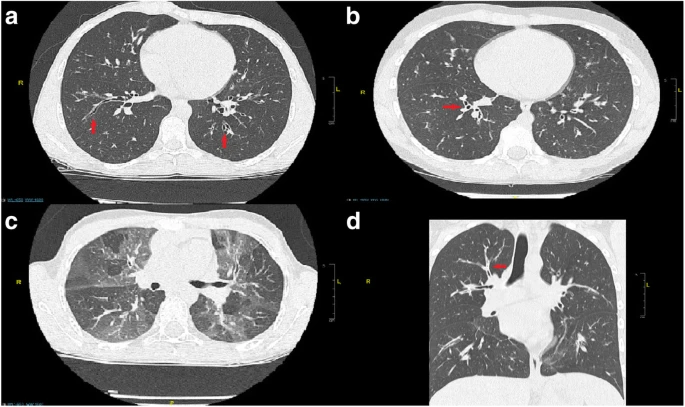BMC Pulmonary Medicine
Research article OPEN Open Peer Review
David Lo, Amit Maniyar, Sumit Gupta & Erol Gaillard
Abstract
Background
Chest computed tomography (CT) scans have a recognised role in investigating adults with severe asthma to exclude alternative diagnoses, but its role in children is less clear. The objective of this study was to review the CT findings of our local cohort of children with severe asthma and to explore whether clinical or pathobiological parameters predicted CT changes.
Methods
Retrospective observational single centre study including all children attending the Leicester difficult asthma clinic (DAC) who underwent a chest CT from 2006 to 2011. Additionally, we recruited eight age-matched, non-asthmatic controls to compare differences in CT findings between asthmatic and non-asthmatic children. All CT images were independently scored by two radiologists.
The DAC patients were sub-divided into binary groups for each abnormality identified so that comparisons could be made against recorded clinical variables including age, lung function, serum total IgE levels, and sputum leukocyte differential cell counts.

Results
Thirty DAC patients (median 12 yrs., range 5–16) were included.
The most common abnormalities were bronchial wall thickening (BWT) and air trapping (AT), observed in 80 and 60% of DAC patients.
Bronchiectasis (BE) was identified in 27% of DAC patients. DAC patients with evidence of BE on CT images were older than those without BE (13.9 ± 0.67 vs 11.5 ± 0.61, p = 0.038). We also identified a positive correlation between increasing BE severity and extent with age (r = 0.400, p = 0.028).
Conclusion
Abnormal CT findings were highly prevalent in our cohort of children with severe asthma, with bronchiectasis identified in approximately one third of children. We found no alternative diagnoses that resulted in a change in clinical management.
